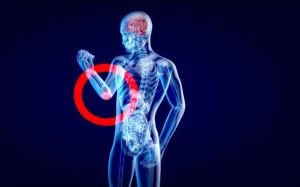 The human skeletal system is a marvel of engineering, providing structure, support, and protection to the body. However, sometimes, skeletal abnormalities can occur, leading to various health issues.
The human skeletal system is a marvel of engineering, providing structure, support, and protection to the body. However, sometimes, skeletal abnormalities can occur, leading to various health issues.
Skeletal abnormalities are diverse and can significantly impact a person’s quality of life. Early diagnosis and appropriate treatment are crucial in managing these conditions.
Today, we’ll explore what skeletal abnormalities are, their common signs, and the underlying causes.
Understanding Skeletal Abnormalities
Skeletal abnormalities refer to any deviations from the normal structure, size, shape, or function of the bones in our body. These abnormalities can manifest in various ways, affecting different parts of the skeleton. They can be congenital, meaning present at birth, or develop later in life due to various factors.
Common Signs of Skeletal Abnormalities
Deformities
One of the most noticeable signs is the presence of bone deformities. These can include irregular bone shapes, unequal limb lengths, or unusual curvatures of the spine, like scoliosis.
Pain and Discomfort
Skeletal abnormalities often cause pain and discomfort in affected individuals. Pain may result from pressure on nerves, joint misalignment, or muscle strain due to skeletal issues.
Limited Range of Motion
Some skeletal issues can restrict the range of motion in joints, making it challenging to perform everyday activities.
Fractures
Weak or malformed bones may be prone to fractures, even with minimal trauma.
Functional Impairments
Depending on the location and severity of the abnormality, individuals may experience functional impairments in their daily lives.
Causes of Skeletal Abnormalities
Genetics
Many skeletal issues have a genetic basis, meaning they are inherited from one’s parents. Conditions like osteogenesis imperfecta and achondroplasia are examples of genetic skeletal disorders.
Nutritional Deficiencies
Inadequate intake of essential nutrients, particularly calcium and vitamin D, can lead to weak and deformed bones.
Infections
Some infections can affect the bones, causing abnormalities. Osteomyelitis, a bone infection, is an example.
Trauma
Serious injuries, especially during childhood, can disrupt normal bone growth and development, leading to abnormalities.
Metabolic Disorders
Conditions like rickets and Paget’s disease can disrupt bone metabolism, resulting in skeletal issues.
If you suspect you or someone you know may have a skeletal abnormality, it’s essential to consult a healthcare professional for a proper evaluation and personalized care plan. Understanding the signs and causes can help individuals take proactive steps toward better skeletal health.
Picture Credit: Freepik
